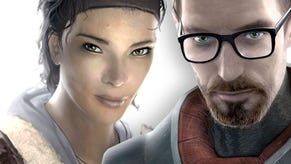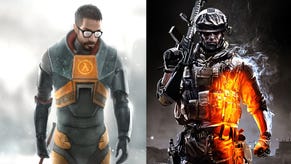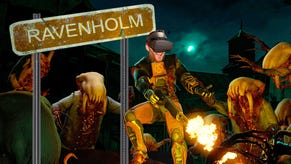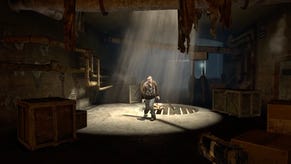Half-Life 2
The original game had a decent Half-Life, and this one looks like it might too...
I wonder what you'll be doing on September 30th. If you're even near a PC, we'd wager you'll be spending every waking moment swishing a crowbar joyously at hordes of leaping headcrabs in Half-Life 2. At bloody last.
We're not even supposed to know about this game yet, but, aaaah the hilarious joys of print mag exclusives. You see the thing that most softcos haven't quite worked out yet is that plugging leaks on the wonderful Interweb is like trying to use a sieve as a bucket, and so over the last 24 hours the net has been alive with news of possibly the most eagerly awaited first person shooter of all time. Actually, make that the most eagerly-awaited game of all time if those hastily scanned in screenshots are anything to go by.
Unforeseen Consequences
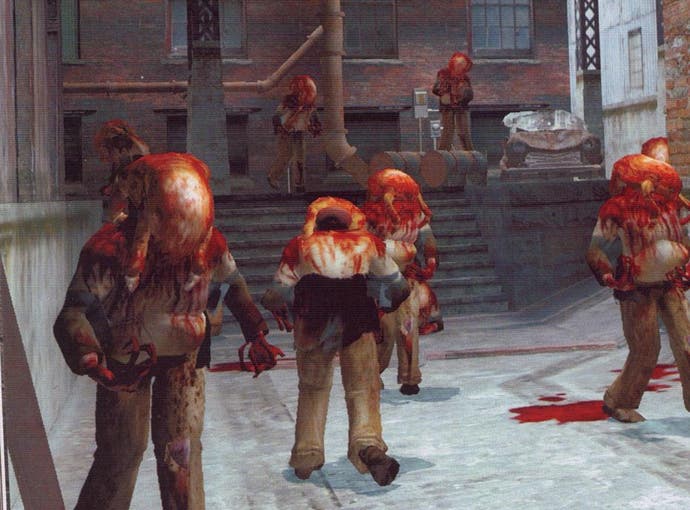
The key piece of speculation to squash is that moneybags Microsoft hasn't managed to secure the game as an Xbox exclusive, which is understandable when you consider that Half-Life has sold seven and a half million copies worldwide on the PC, and just 500,000 to console owners with the PS2 conversion. Valve knows where its core audience lies, and appreciates that the game will sell just as well on PC as it would on Xbox – and without the inherent restrictions of console development. This, along with Doom III, looks like being the killer app the PC needs to restore its flagging fortunes after a long period of console dominance. Surely any gamer with a pulse would gladly upgrade their PC to run a game that looks as good as Half-Life 2?
Taking place sometime after the events of the bizarre ending of Half-Life, the sequel is set in City 17, a fictional Eastern European location that has been overrun by an invading horde of spindly-legged aliens. Valve has been deliberately tight lipped on the storyline so far, preferring to blether on about the technical side and its "Proof Of Concept" project, but from the various articles we've seen so far, its apparent that the game will be set across 12 chapters, with each said to provide three to four hours of gameplay in each area.
What we have managed to glean is that players will (obviously) take control of ginger beardy research scientist Gordon Freeman, who is now working for The G-Man – the sinister suited guy with the briefcase that offered you a job at the conclusion of the first game. You get to partner with a non playable female, by the name of Al Vance, and it would seem that you're battling against the alien hordes again in a kind of War Of The Worlds meets The Tripods scenario. Beyond that, nobody outside Valve's inner circle knows anything more, but that's undoubtedly a good thing. If there was one thing that was utterly superb about the original, it was the element of surprise and suspense from not knowing what was going on, or what was going to happen next.
Surface Tension
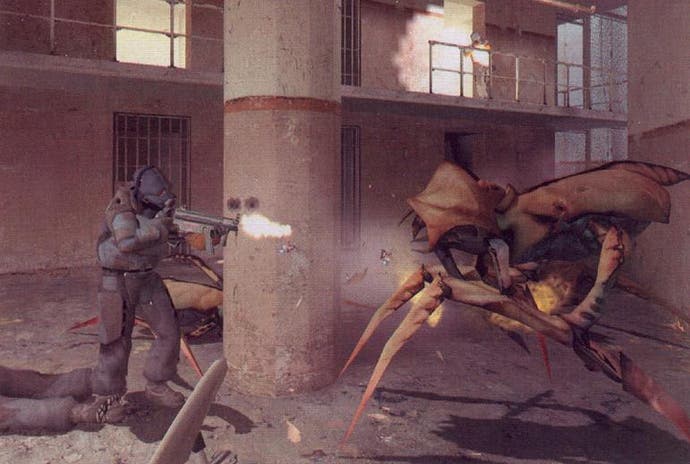
We're happy to report that Mark Laidlaw is once again the man responsible for the subtle seamless narrative, and in the June edition of PC Gamer in the US he commented: "[While] making Half-Life, we learned a lot about telling a story in the narrative mode. The goal of our scripting techniques is to keep the player immersed in the story, completely caught up in the events as they unfold."
But the excellent set pieces will apparently be much more interactive this time around: "Many times in Half-Life, it was fairly obvious that you were witnessing a scripted sequence. A good example is the falling elevator sequence at the beginning of the game, which happens the same way every time. [In HL2] we've used our tried and true devices as springboards for jumping into new kinds of scripting where the borders between scripted and unscripted aren't so obvious, Laidlaw revealed in PC Gamer (US)."
Valve co-founder Gabe Newell, meanwhile, preferred to focus almost solely on the game's technical prowess, and in the similar article in Computer Games magazine he commented: "Because of the sales of the first game and the amount of fan and critical support, we have a rare opportunity to do something dramatic with Half-Life 2. We could have come out with Half-Life 2 pretty quickly and said 'Here's more of the same' but we thought we'd take time out to figure out what we though were the interesting opportunities in terms of technology." Hurrah for that – if only Core had thought to do the same thing with the Tomb Raider series, eh?
Lambda Core
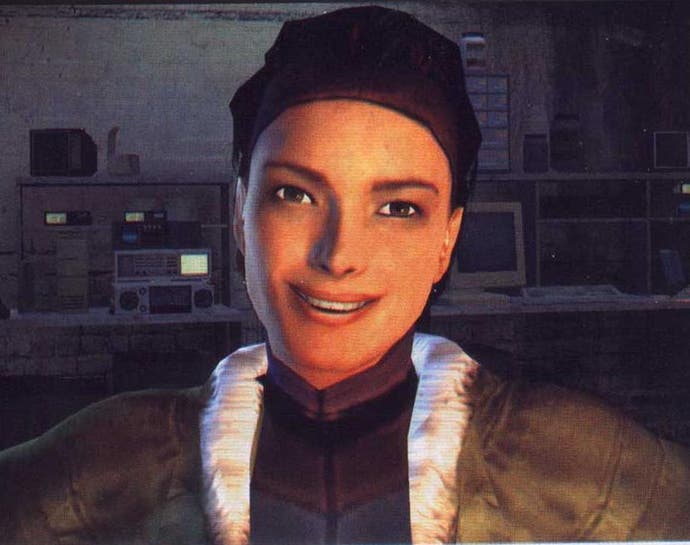
The team only locked down the game's proprietary 'Source' engine back in September last year. Given that the original was based on fairly ageing, albeit heavily modified Quake engine technology, it's good to see Valve has at least opted for its own technology this time around, and even more surprising that it has seemingly pulled it off with a degree of panache lacking in so many me-too first person shooters clogging up the release schedules.
The various interviews that we've seen go to great lengths to blether on about how the character models look like they have real flesh now, and how great the eyeball animation is, but we're sure that most of you are savvy enough to have tracked all of these articles down already.
Wading through the often quite tedious talk of real-time luminescence, floating dust particles and diffused and specular bump mapping, there are – praise be – some interesting titbits: notably the way that physical properties are said to have a direct influence on gameplay.
Residue Proceeding
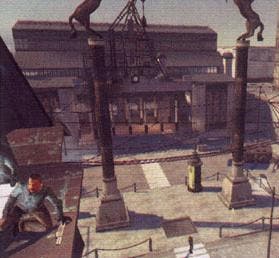
Rather like an interesting advancement of the GeoMod technology first shown off to limited effect in Red Faction, Half-Life 2 allows you to destroy and modify parts of the levels. For example, wooden supports holding up a pile of pipes can be shot out to crush the enemy below, while objects such as boxes, chairs or even a metal grate can be picked up and used as shields or thrown – useful when trying to outwit those dreaded sentry guns.
As ever, the usual claims of advanced AI have also been bandied about, and Valve's Jay Stelly was only to happy to oblige (again, in PC Gamer US): "One of the best things about our AI is that it understands context. NPCs use information about the world and the story to help choose appropriate behaviour."
Human NPCs will behave far more realistically, according to Stelly in the same article: "Ally characters have different dialogue depending on the current setting and the player's current actions. They know about interesting things in the world to notice or even point out to the player." The Barney character also won't be such a headless chicken this time: "In Half-Life Barney always ran into a fight all guns blazing. In Half-Life 2 he behaves very differently."
Interloper
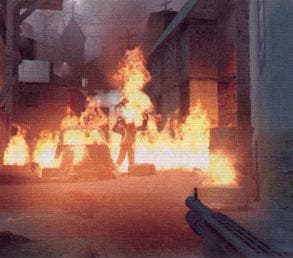
'But what about multiplayer and the mod community?' some of you will doubtlessly be asking. "We have a lot of confidence that we're building a platform for mod authors that's going to be much more robust than [Half-Life's]," said Newell, in PC Gamer. But apart from blathering on about how easy it will be to impressively texture the environment, Valve was not forthcoming with further details.
Most of you with a PC will probably be on the one hand drooling at the extremely delicious screenshots and looking forward to all this advanced AI, but on the other fearing the game's technical requirements will be a world away from your current set up.
Rather fortunately, Valve has set the base minimum at PIII 700, with a DX6-compatible graphics card, although God help you if you're thinking of doing the game any justice at that level. A rather more realistic 'optimal' target has been set at a GeForce 4-equipped P4, which by the time the game comes out shouldn't equate to a ridiculous outlay for those poor buggers faced with an upgrade. We still bitterly recall paying £1,500 for a 486 DX2 66Mhz in 1994, so don't even think about bitching about the cost of PCs now, ok. You don't know you're born sometimes.
Anomalous Materials
Interestingly, the game will be the first major videogame release that players will be able to download direct from the developer, with Valve's wonky Steam system being employed to allow you to avoid that tiresome visit to your local store. Apparently retailers won't miss out, with negotiations underway to allow them to host Steam servers. Let's hope it sorts out the system by the time the game hits, or it could end up being one of the biggest farces in gaming history.
Regardless, to say we're looking forward to Half-Life 2 is the understatement of the year. If Valve can deliver on the promises it is making, and the game plays vaguely close to as good as the screenshots hint, we're all in for one hell of a treat come September 30th.



